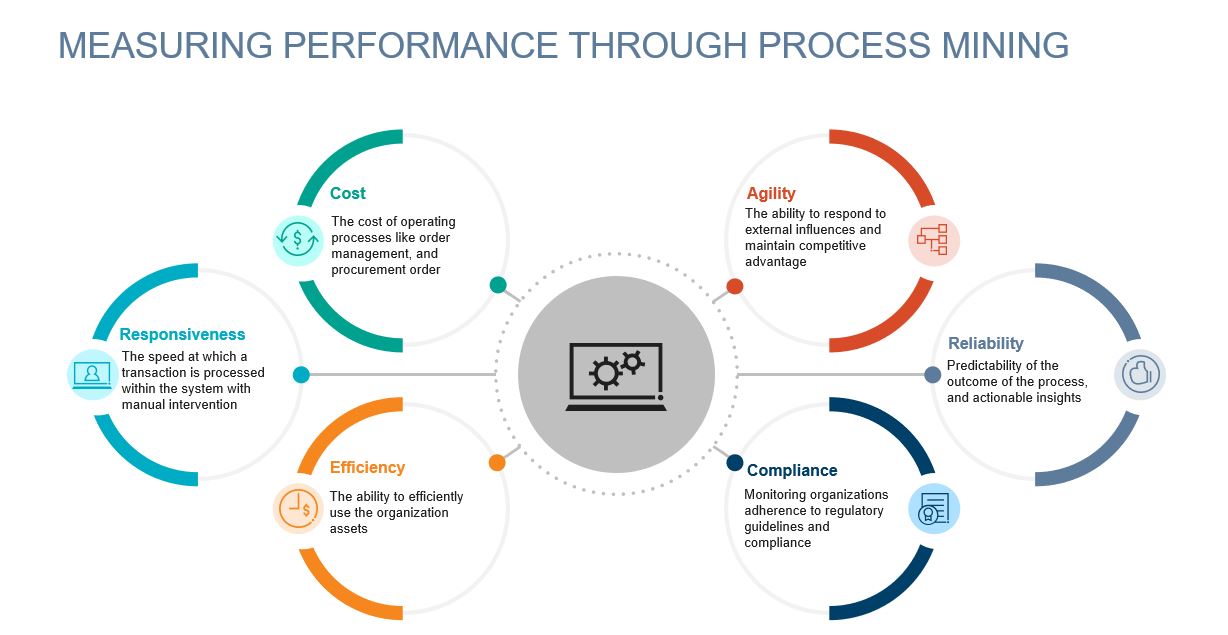The COVID-19 pandemic has forced most organizations to revisit their digital transformation roadmaps to continue to both grow market share and provide exceptional customer service. Companies had to rethink their digital transformation objectives as most customers have changed their levels of engagement with products and services. Today’s consumers are looking for agility, flexibility and responsiveness from businesses through varieties of digital channels. To meet these new consumer expectations, companies must transform the way business is executed and how the business processes are harmonized across business applications. But business process harmonization keeping the customer at the core is easier said than done. The traditional approach of process discovery through workshops and discussions with process owners has changed. Canned business intelligence reports that don’t provide detailed insights into the process and its measurement are no longer effective. While business intelligence is good in measuring the business performance in a rear-view mirror, the time is ripe for forward-looking measures that will prepare companies to anticipate unknowns. This is where process mining comes into play.
Process mining provides the ability to combine the process model and data to provide measurable insights by analyzing the footprint of every transaction within the system. Process mining draws a line between the process bottleneck and its impact on operational efficiency and the bottom line by leveraging the following key features and functionalities:
- Process discovery – Analyzing the business processes as it is flowing through the system, mapping transactions to understand conformance and adherence to the standard processes and identifying the process bottlenecks
- Task mining – Combining process discovery with task mining gives the organization the fullest possible view of how their processes run including all the activities that will not generate logs in transactional systems (SAP ERP), such as checking an email, performing spreadsheet-based calculations, etc.
- Process automation through action alerts – Developing an AI-driven process model that continually analyzes data to identify process anomalies and send alerts to take corrective actions to bring the process back on track
- Seamless data integration – Integrating systems without disrupting the complex multi-system environment to get end-to-end visibility of the process.
Organizations embarking on a digital transformation journey focus primarily on the customer, operational agility and transparency, automation and virtual first. The process mining will enable organizations to optimize, simplify, and develop sustainable processes to support responsive customer service organization and improved supply chain optimization, across the organization:
- Customer service and management functions have started investing heavily in process mining to deliver exceptional service to internal and external customers while competing with constantly changing business dynamics.
- The pandemic forced supply chain functions to look holistically at their processes to minimize disruption and optimize the procurement and order management processes to provide exceptional customer service. The control tower concept for supply chain coordination has become the norm, rather than the exception, due to increased global supply chain challenges.
- There is more pressure on the finance function now than ever before as the focus is to transform processes to support the modern finance operating model of ‘insight and action’ first, which requires re-evaluating core processes touching almost every part of an organization.
It is evident that process mining is becoming the core of the digital transformation initiative to simplify and automate business processes. To attain maximum benefits from process mining, organizations should measure performance on six key parameters outlined in the following chart:

Once the key parameters are identified for each process, baseline metrics should be defined, developed, benchmarked and monitored for continuous process improvement. These metrics should allow the organization to discover a wide range of process challenges like supply chain delays, product/service unavailability, high days sales outstanding, etc., and recommend actionable tasks to minimize the manual intervention.
Below are a few examples of how Protiviti has helped our SAP clients succeed with process mining:
- One of the world’s largest manufacturers of primary batteries, portable flashlights and lanterns was struggling with slower and incomplete order fulfillment causing downstream receivables and loss of revenue. Protiviti performed a data-driven analysis using Celonis process mining, uncovering bottlenecks in the sales forecast process, order fulfillment process and receivables management. Customer-specific actionable process insights have been developed to improve each of these functions. The new insights have helped the company monitor the processes in real-time and adjust the workforce in order to prioritize customer service issues. The process mining journey has been extended to other processes in the organization, combining the data from heterogeneous systems for the overall effectiveness of the digital transformation journey of the client.
- Protiviti implemented an advanced SAP accounts payable working capital solution for a large global media company by developing a unified data model consolidating the data from SAP and Oracle transactions systems supporting two companies as part of the merger process. The analysis went beyond standard AP metrics and focused on working capital and cash flow optimization. In addition to the historic analysis, we deployed action engine signals, with automation, to detect and fix deviations like duplicate invoices and mismatched payment terms. Protiviti applied actionable, forward-looking automation that quickly fixes issues before invoices are paid, thus improving outgoing cash flow. To construct the data model, we combined data from two different source systems, providing insight for the first time into a post-merger view of the full enterprise. This view enabled the client to prepare for a full system consolidation, which is coming up in a few years. One especially valuable outcome of this project was the ability to catch duplicate invoices across both source systems.
- Protiviti helped enable and empower the North American customer service function for one of the world’s largest cosmetic manufacturers to more effectively analyze their SAP order management and delivery process, which impacted on-time in-full delivery, manual intervention required to process the order, frequent AR deductions. The key challenge was to consolidate and integrate the data from multiple processes and provide end-to-end visibility at the Customer level. By utilizing process mining tools, we were able to develop a unified model to support both process mining and executive dashboard reporting for the order–to–cash process leading to a 10x improvement in touchless orders. Improved automation opportunities, accounts receivables deductions, and rework activities, were a few of the many outcomes of this project. Our approach allowed the team to focus more on their on-time-in-full delivery and cost-to-serve metrics, equipping them to improve customer satisfaction and profitability.
To learn more about our SAP consulting services, contact us.



